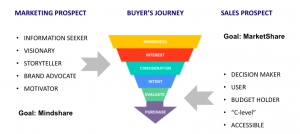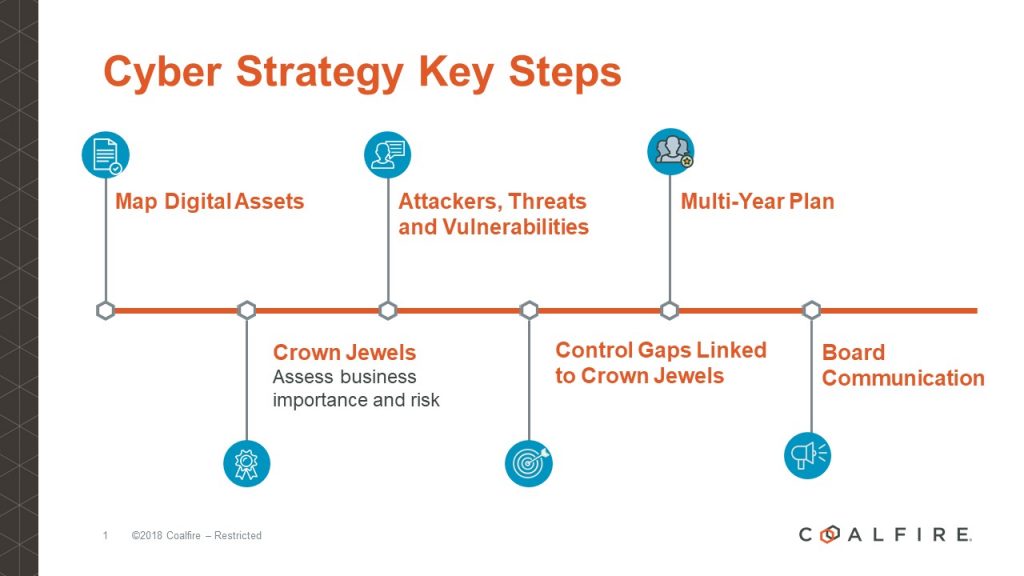
by scott.gillum | Oct 13, 2020 | 2020, Business Trends
Estimated read time: 5 Minutes
This post ran original on The Drum on September 30th it can be viewed by clicking here
Thank you Covid, we just broke the record for poor performance. According to Hubspot, the response rate to emails fell to a record low of 2.1% in April. Said differently, 98% of our efforts to reach new prospects failed.
With conversion down what did we do? You guessed it, we increased the number of emails sent during the same period by 50%, according to Hubspot’s survey of 70,000 customers. We are playing a zero sum game, and it’s literally a race to the bottom.
Why is this acceptable? Yes, the pandemic has had a dramatic impact, but even in good times, a 4% click through rate is the benchmark. Why haven’t we been able to improve?
Because the only real lever we really had was to increase volume as conversion rates declined. Now with the advent of new tools, we’re uncovering issues and learning new insights into how to improve performance. Here are 3 things we have discovered so far.
Issue #1 – The Wrong Objectives
Marketing has, because of the pressure from the rest of the organization (from mostly sales and the product organization) lost sight of its objectives. Marketing’s goal is to increase the awareness and interest in a company’s brand, product and/or services and get that prospect to take action. It’s to start the cycle, get a conversation going and drive interest.
A good marketing prospect is an information seeker. Employees who are on the constant lookout for information that benefits them personally, in their role, or for the greater good of the company. A great marketing prospect is someone who will bring our information into the organization, get the buying process started and advocate for your brand.

The point, what we are defining is a personality type, not a title. In the past that has been very difficult to identify. As a result, we have had to rely on mining the existing customer database or using a persona that was defined by the product or sale organization which has left us with senior level buyers.
The problem with that is many of these targets, who are decision makers or budget holders, are not present at the beginning of the buyer’s journey. And as we now know, they are also not interested in what we’re offering.
Issue #2 – The Wrong Targets
With the advent of personality profiling tools like Crystal Knows, IBM Watson, or xiQ, it is now possible to determine which personality types are most likely to meet the needs of marketing.
AI enabled profiling tools identify 4 personality types as defined by DISC (Dominant, Influencing, Steady and Conscientious). Of the four personalities, only 2 types of audiences are good for marketing purposes because of their behaviors and motivations.
Based on our recent client work across the healthcare, tech and professional services industries, we also know that at least 30% of a company’s customers will profile into one of the two categories that are either not active information seekers or are not active in the buying group.
They will not convert, but given our current practices, they still end up on the target list driving down response and conversion rates.
Issue #3 – The Wrong Type of Content or Marketing Assets or Both
The two key audience segments that are present at the beginning of the buying process and actively seek information have different motivations for why, and how they intend to use information.
When targeting titles, companies create one type of content based on that buyer’s role. With personality profiling we know that audiences have different preferences for content and how it’s packaged.
The first personality type prefers “big picture” highly visual content told in story form. These “motivators” are drawn to infographics, animated and testimonial videos, which allow them to grasp concepts very quickly.
Their personality type is “altruistic” and they use information to share with others for the good of the organization. Their motivations are deeply personal in that they like to be seen or perceived as a “thought leader” that others seek out for insight.
Contrast that with the other active information seeker. The “demonstrator” profile seeks information relevant to them in their role. They want “proven” information, use cases, case studies, and business case material (ROI’s). Content that is rich in information on how to implement and business impact.
Combined, these two groups will make up 70% of your responders to marketing activities depending on what it is, and you need to know how that mixes to build and align content. And here’s a hint, you only need two types of personas for marketing…the two I just described.
We are dealing with a future that is more uncertain than anything we have experienced in the past. Add to that an election, polarization and social justice movements we have one of the most emotionally charged atmospheres in modern history. ABM and personas do not delve deep enough into defining buyers interest, motivations and preferences.
To improve marketing performance you have to ramp up personality based marketing and that will require work. Not everyone will be willing to put in the effort, but the ones that are will break the chain of putting more in and getting less out.

by scott.gillum | Sep 15, 2020 | 2020, Business Trends
Pixel506 is a tech company based out of New York and Costa Rica. Antonio Ramirez, CEO of Pixel506, sat down with Scott to discuss remote work and working in Costa Rica during COVID19. Antonio Ramirez gives tips on creating award-winning websites and how to set up your digital efforts for success.
To hear Scott’s entire conversation with Antonio Ramirez, CEO and Founder of Pixel506 about “Remote Work And Working In Costa Rica”, listen or download here:

by scott.gillum | Sep 7, 2020 | 2020, Observations
by Scott Gillum
Estimated read time: 2 Minutes
I first heard it approaching the lake on my morning run. It was a “whoop” but I couldn’t place the sound.
A couple of hundred feet later I heard it again, along with the sound of Canadian Geese. As I approached the hill leading to the dam I heard it again, and now I was able to identify the source.
A woman standing on the side of the trail facing the lake. In full view of everyone for a good hundred yards, dancing, literally, like no one was watching. And I mean she was feeling it! Legs and arms in full motion and every so often an outburst she couldn’t hold in.
As I approached her, I began to smile. I could also see others smiling as they passed her in the opposite direction. Smiles created by a woman putting out nothing but unadulterated positivity. Rounding the corner of the lake I heard her again and the smile returned. I thought here is a person who has figured it out.
She’s found joy by blocking out everything else going on around her, focusing only on the beauty of the lake in front of her, and being completely consumed by the feeling of her music. She was in the moment, her moment.
I think we all could use a little more of that, I know I could. What a great way to start the day. Rock on my friend. Rock on.
#goodvibes #positivity #joy

by scott.gillum | Aug 18, 2020 | 2020, Marketing
by Scott Gillum
Estimated read time: 2 Minutes
Antonio Ramírez, CEO at Pixel506 and Scott Gillum, CEO & Founder of Carbon Design discuss what you need to know about Digital Marketing newest trends. Topics discussed will be managing work and family life balance and how to keep employees engaged, productive and appreciated.
For more tips on marketing, business, and thinking differently delivered directly to your inbox, subscribe to our newsletter at www.carbondesign.com/subscribe.

by scott.gillum | Aug 12, 2020 | 2020, Marketing
By Jackson and Scott Gillum
Estimated read time: 5 minutes
Editor’s Note: A father and son project often results in something being built. A treehouse, a restored car or a piece of furniture. With very little mechanical skills but a knack for storytelling and a son who is an English major, our project resulted in a white paper on Personality Based Marketing to be published in the fall. The blog post below is an excerpt from that piece, Jackson researched and wrote it, I just helped to frame it, without any tools…of course.
John B Watson is a crucial character in the use of personality in advertising, used extensively today, yet for many his name is unknown. He lived during a time (1878-1958) that saw the rise and boom of both psychology and personality studies.
As a professor at Johns Hopkins he did extensive research in psychology until a scandalous affair with a student would cost him his job. After being forced to leave the university, he entered the world of marketing work as a door-to-door salesman for advertising agency J. Walter.
It didn’t take Watson long to start making observations about his customers. He concluded that rather than consumers being rational, they acted emotionally. Watson claimed: “tell him something that will tie him up with fear, something that will stir up a mild rage, that will call out an affectionate or love response, or strike at a deep psychological or habit need.” The Authenticity Bomb.
Using this, Watson would lead several advertising campaigns, utilizing strategies that are still in use today. During his advertising for Ponds Cold Cream and Pebeco toothpaste, he revolutionized the way that testimonials were used.
These testimonials were based on evoking the emotional response of desire for the customers. The ads featured seductive women, and were not directed to men but instead to women with the promise that they would become more desirable. The same approach used today in the advertising of skin and beauty products.
Attractive men and women drinking beers together sent a message greater than “this is a good beer” but instead “drink this beer and you can be like them.” Watson’s style of ads pitched a new reality attainable through the acquisition of their product.
There is now a new phenomenon in advertising. A new alliance few expected between social movements and corporations. Historically, adhering to social movements could be bad for business, and we have seen many examples of this.
Two recent examples are Budweiser’s “Born the Hard Way” Ad and Pepsi’s famous “Live for Now” ad. Both of these ads came out in 2017 and they were massive failures, each in their own way.
The story behind the Pepsi ad is more complex than that of the Budweiser ad, and the fact that Pepsi advertisers never foresaw any negative response is astonishing, yet you can tell their heads were naively in the right place.
They picked up on the popular movements at the time, specifically the #resistance movement aimed at the Trump administration and the foundations of the BLM movement. This can be seen everywhere in the ad, where the focal point is an enormous protest with young people marching, directly aimed at their millennial audience.
Then, the ad makes a massive turn for the worst, the idea that a Pepsi can bring everyone together. The moment that Kendall Jenner hands a police officer a pepsi is the moment that Pepsi created what could be considered one of the worst ads in history.
The message is patronizing, calling on both the absurdity of the message along with popular anti- Kardashian-Jenner sentiments that they are relatable people. This “bomb” exploded because Pepsi appeared to be disingenuously producing an ad that attempted to take advantage of social movements, but perhaps they were at the right place at the wrong time.
And that brings us to today, following the death of George Floyd and the monumental growth of BLM protests that have grown across the entire nation in 2020, companies are scrambling to produce as many ads as possible to address this audience.
The interesting phenomenon is, just like where Pepsi produced an ad using social movements as a marketing ploy without any relevance to their company, so are an extensive amount of corporations with seemingly no backlash…so far.
On July 13, 2020 Old Navy, released its “#WeAreWe” ad. It is colorful, upbeat, and poetic, praising the social movements of 2020. It is also accompanied by a new store manifesto committed to activism within their own company, and it has been successful.
Below the surface lurks the fact that their clothing is produced in Bangladesh, Cambodia, China, El Salvador, Guatemala, Nicaragua, Philippines, Sri Lanka, etc., countries renowned for their cheap labor and lack of environmental protection laws.
While Gap, Old Navy’s parent company, has addressed its garment production in the past giving it some praise, it still has glaring issues when it comes to worker pay and empowerment. Good on You, a website dedicated to rating the ethical behavior of companies, scored Old Navy a “2 out of 5” when it came to labor, and a “3 out of 5” when it came to environmental friendliness.
What Old Navy, and companies like them are pursuing is potentially dangerous to the brand. In addressing one issue they are exposing themselves to others. And potentially, setting themselves up to be unable to fulfill their promise to consumers, making them seem hypocritical.
What companies must realize is that while they may have the best intention, in order to be authentic they must be able to live it. Especially when the “trolls” come knocking. In the emotional and polarized environment we live in today, “covering the bases” is a tightrope that keeps shrinking.
Watson’s ads were successful because companies pitched you a new better version of yourself, one you can attain only through them. Now, companies pitch you a new version of them, one that they hope you accept at surface value but don’t look at too closely.

by scott.gillum | Jul 15, 2020 | 2020, Business Trends
Covid, remote teams, layoffs, diversity and inclusion, trade wars, and now security risk? There is so much on the plate of CMO’s already, and now they need to focus on cyber risk. Yes, according to Patrick Kehoe, Chief Marketing Officer at Coalfire, a cyber risk assessment firm.
“The FBI says cybercrime reports quadrupled during COVID-19 pandemic; other reports and our experience reflects the same. In short, security isn’t an IT problem, it’s a business problem—and it’s one that marketing needs to pay attention to, given the amount of technology it now controls.”
What specifically should the heads of marketing be concerned with? Well, start with remote teams accessing customer databases, content management systems and those “off the IT radar” landing pages, microsites and websites. According to Kehoe, “it’s time to come clean with the IT department. If you haven’t already been breached, it is likely just a matter of when, not if, so you have to stay proactive.”

A recent RSA CMO study showed that 20% of security incidents can be linked back to marketing activities. What can you do to be prepared? “The number one thing marketers can do is get a seat at the table. Use the IT organization to assess vendors and make it clear to them that security is paramount. Ensure an incident response plan is in place and be a part of the cyber security strategy,” according to Kehoe.
A good cyber security policy can also have an upside. Use it in your marketing material. Ensuring customers, especially at this time, that you have a solid understanding of the risk, and have plans in place to address them is essential. Don’t be shy about listing your certifications and/or seals on your website.
Security and risk assessments are now table stakes, according to Kehoe. “If you want to make it into the consideration set, you have to demonstrate that you have a clear and proactive approach to addressing security issues. But don’t overstate it, if your cyber security solution only blocks 99% of attacks, don’t say it blocks all attacks.”
Finally, being honest about your success rate and the capabilities of your solution is the best way to build long-term relationships and drive more positive customer referrals over time. But first, you have to have that honest but difficult conversation with the IT department about those things they may not know about. Good luck, and stay safe!
To hear Scott’s entire conversation with Patrick Kehoe, Chief Marketing and Strategy Officer at Coalfire Systems Inc. about “What CMO’s Need To Know About Cyber Security”, listen or download here:













